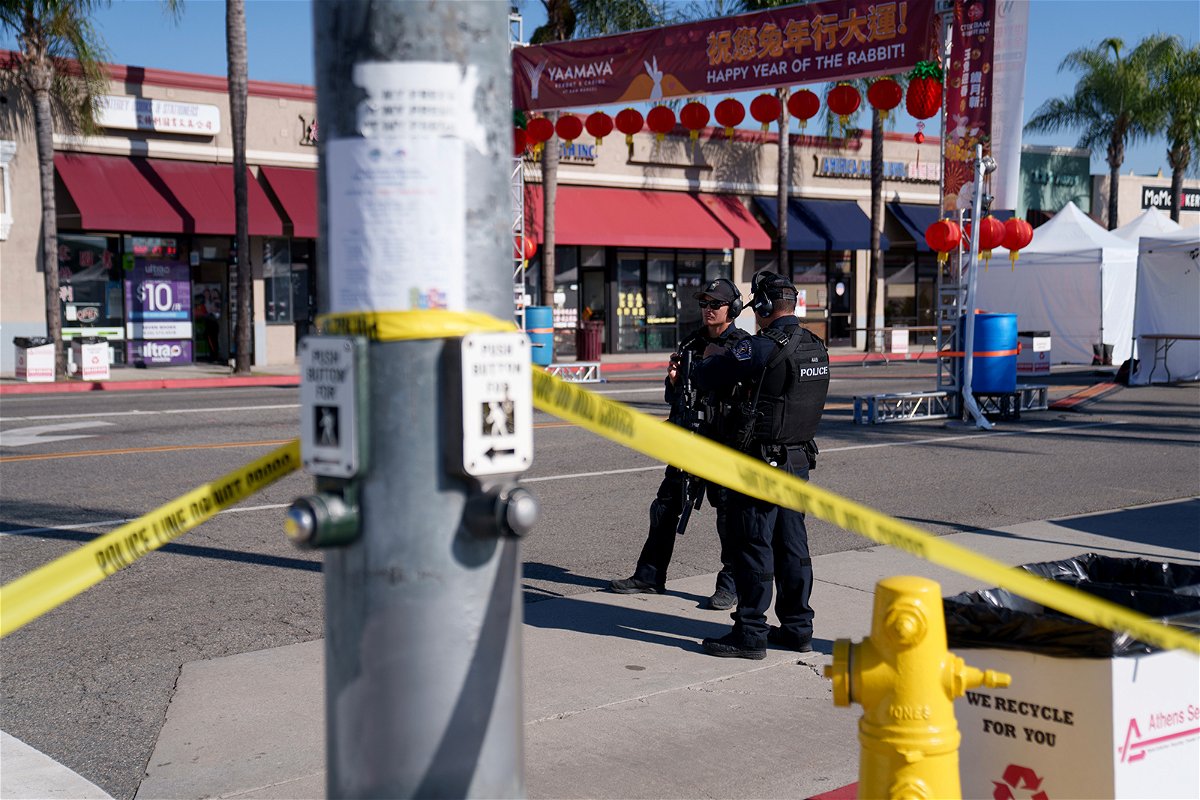Most attackers suffer major life challenge in year before mass violence, study finds

Police officers stand guard near the scene of a deadly shooting on January 22
By Whitney Wild and Holmes Lybrand, CNN
Attackers who commit mass violence frequently display threatening or violent behavior well before an incident and often suffer a major life setback in the year prior to an attack, according to a newly released analysis by the US Secret Service National Threat Assessment Center.
“The analysis found that most attackers had experienced a significant stressor within a year of their attack, including from financial, family and health issues and that half of the attackers were motivated at least in part by some grievance, including workplace issues, perceived personal wrongs, and domestic issues,” the report said.
Analysts with the National Threat Assessment Center reviewed 173 mass casualty incidents between 2016 and 2020 in which three or more people were killed or injured in public or semi-public areas such as places of worship, businesses and schools.
In attacks where firearms were used, over 75% of the perpetrators used legally acquired firearms, while nearly a quarter of those attacks involved at least one firearm that was acquired illegally, according to the report, whether through theft, straw buyers or private sellers.
“It’s just happening way too often,” Dr. Lina Alathari, director of the National Threat Assessment Center, told reporters.
The report said that while roughly 57% of attackers were White and 34% were Black, there is no standard demographic profile for a potential attacker, yet behavior patterns among those inclined to violence are remarkably similar.
Most attackers were male and had drawn concern from others, whether through threats or disturbing communication they made, behavior changes, or acts of violence.
“Nearly half of the attackers were found to have had a history of domestic violence, misogynistic behaviors, or both,” the report said.
Recent shootings in California that left 18 people dead in just three days highlight the range of types of attackers and motives. The alleged shooters were 66-year-old and 72-year-old Asian men, which would be considered outliers according to the NTAC report.
“Community members should be encouraged to report behaviors that cause them to feel concerned for the safety of themselves or others,” the report said, highlighting “the increased need for community resources to address mental health needs, social isolation, substance abuse, and individuals in crisis.”
The analysis found that most attackers had experienced a significant personal challenge in the year before they attacked, including financial, family and health issues. Half of the attackers were motivated at least in part by some grievance, including workplace issues, perceived personal wrongs, and domestic issues.
“Extreme or hate-based views played a prominent role in the motivation for one-fifth of the attacks,” according to the report, including against women, police, as well as racial, religious, and political groups.
Nearly two thirds of the attackers had a criminal history, according to the analysis, with over one-third previously facing charges for violent offenses, and 41% engaging in at least one incident of domestic violence.
Alathari said the report’s data is crucial as communities and businesses seek ways to effectively stop mass acts of violence.
She noted NTAC trainings attract tens of thousands of participants ranging from local law enforcement to professional sports leagues and teams.
Despite clear evidence behavior patterns are shared and escalations are predicable, Alathari said she frequently hears about hurdles to developing effectively policy.
“I think where we see the challenges is really in terms of equipping communities with resources and also having programs in place that ensures that information doesn’t fall through the cracks,” she said.
Alathari stressed buy-in from top level leaders — from politicians to business owners — and resources to respond are critical.
“It’s not just one person’s responsibility. The number one best practice that we advocate, in fact — many of our trainings — is about multi-disciplinary behavioral threat assessment.”
The-CNN-Wire
™ & © 2023 Cable News Network, Inc., a Warner Bros. Discovery Company. All rights reserved.



